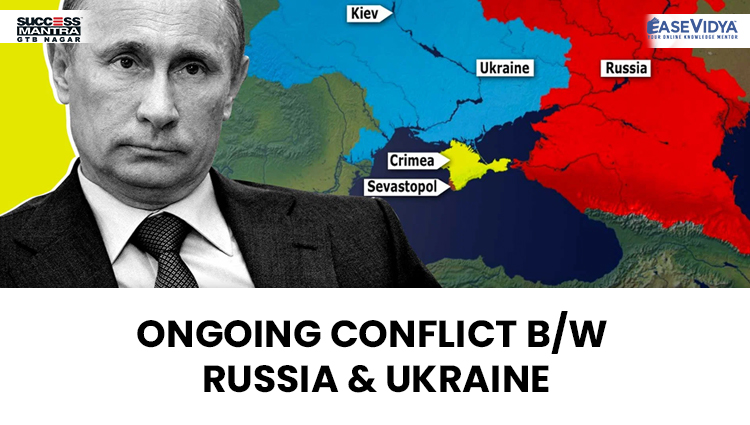
ONGOING CONFLICT BETWEEN RUSSIA AND UKRAINE
ONGOING CONFLICT B/W RUSSIA & UKRAINE
Recently, Russia recognized two independent republics out of Ukraine (Donetsk and Luhansk - Donbass region), signaling the inevitable war that followed. In the declaration of war, the Russian President described Ukraine with no history or identity, and was entirely and fully created by the former Soviet Union (USSR). Ukraine and Russia share hundreds of years of cultural, linguistic and familial link.
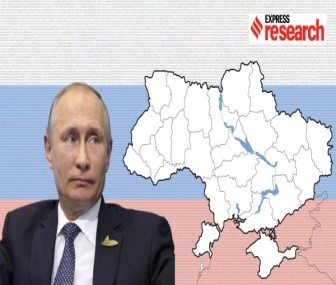
Current Affairs Notes By Success Mantra Coaching Institute GTB Nagar Delhi CLICK HERE
WHAT IS THE EARLY HISTORY OF UKRAINE?
A millennium ago, what is Ukraine today lay at the heart of the Kyivan Rus’ (Rus’ land). Kyivan Rus was a federation of the East Slavic, Baltic, and Finnic peoples of eastern and northern Europe, with its capital in Kyiv. Modern Ukraine, Russia, and Belarus all trace their cultural ancestry to the Kyivan Rus’. The Kyivan Rus’ reached its greatest size and power in the 10th and 11th centuries. In the mid-13th century, the Kyivan Rus’, weakened by the decline of trade as the Byzantine Empire collapsed, fell apart under the onslaught of the Mongol Golden Horde, who sacked Kyiv in 1240. The Byzantine Empire, also called Byzantium, was the eastern half of the Roman Empire, based at Constantinople (modern-day Istanbul) that continued on after the western half of the empire collapsed. The Golden Horde was the group of settled Mongols who ruled over Russia, Ukraine, Kazakhstan, Moldova, and the Caucasus from the 1240s until 1502.
WHAT ARE OTHER SALIENT FEATURES OF UKRAINE?
Ukraine is in the east of Europe, and is bound by Russia to its northeast, east, and southeast, and the Black Sea in the south. In the southwest, west, and north, Ukraine shares borders, in the anticlockwise direction, with Moldova, Romania, Hungary, Slovakia, Poland, and Belarus. In July 2021, Ukraine’s population was estimated at 43.7 million. Of this, 77.8% was of Ukrainian ethnicity and 17.3% was Russian and Ukrainian and Russian speakers made up 67.5% and 29.6% of the population respectively.
Relations with India: India is Ukraine’s largest export destination in the Asia Pacific region. The country’s major export to India is sunflower oil, followed by inorganic chemicals, iron and steel, plastics, and chemicals. Ukraine’s major import from India is pharmaceutical products.
WHEN DID UKRAINE INCORPORATE INTO RUSSIA?
In the 18th century, Empress Catherine the Great (1762-96) of Russia absorbed the entire ethnic Ukrainian territory into the Russian Empire. The Tsarist policy of Russification led to the suppression of ethnic identities and languages, including that of the Ukrainians. Within the Russian Empire though, many Ukrainians rose to positions of prosperity and importance, and significant numbers migrated to settle in other parts of Russia. More than 3.5 million Ukrainians fought in World War I on the side of the Russian Empire, but a smaller number fought against the Tsar’s army with the Austro-Hungarians.
Ukraine Becoming part of USSR: The World War I led to the end of both the Tsarist and Ottoman empires. As a mainly communist-led Ukrainian national movement emerged, several small Ukrainian states sprang up. Months after the Bolsheviks took power in the October Revolution of 1917, an independent Ukrainian People’s Republic was proclaimed, but a civil war continued between various claimants to power, including Ukrainian factions, anarchists, Tsarists, and Poland. In 1922, Ukraine became part of the Union of Soviet Socialist Republics (USSR). The Soviet Union had its roots in the October Revolution of 1917, when the Bolsheviks, led by Vladimir Lenin, overthrew the Russian Provisional Government that had replaced Tsar Nicholas II.
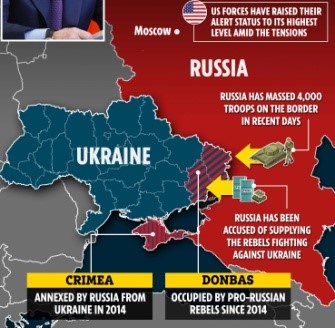
WHAT WAS THE OTTOMAN EMPIRE?
An empire created by Turkish tribes in Anatolia (Asia Minor) that grew to be one of the most powerful states in the world during the 15th and 16th centuries. The Ottoman period spanned more than 600 years and came to an end only in 1922, when it was replaced by the Turkish Republic and various successor states in southeastern Europe and the Middle East. At its height the empire encompassed most of southeastern Europe to the gates of Vienna, including present-day Hungary, the Balkan region, Greece, and parts of Ukraine, portions of the Middle East now occupied by Iraq, Syria, Israel, and Egypt, North Africa as far west as Algeria, and large parts of the Arabian Peninsula.
STATUS OF UKRAINE AFTER THE COLLAPSE OF USSR
In 1991, the USSR was dissolved. The Demands for independence had been growing in Ukraine for a couple of years previously, and in 1990, over 300,000 Ukrainians created a human chain in support of freedom. This was followed by the Granite Revolution when students sought to prevent the signing of a new agreement with the USSR. On 24th August, 1991, after the failure of the coup to remove President Mikhail Gorbachev and restore the communists to power, the parliament of Ukraine adopted the country’s Act of Independence. Subsequently, Leonid Kravchuk, head of the parliament, was elected Ukraine’s first President. In December 1991, the leaders of Belarus, Russia, and Ukraine formally dissolved the Soviet Union and formed the Commonwealth of Independent States (CIS). However, Ukraine’s parliament, the Verkhovna Rada, never ratified the accession, so Ukraine was legally never a member of the CIS.
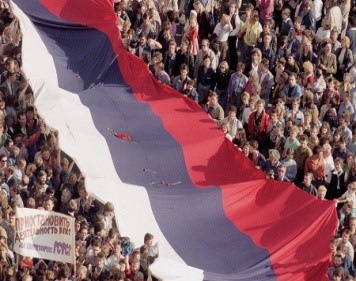
RECENT HISTORY OF RUSSIA-UKRAINE CONFLICT?
In 2014, Russia had annexed Crimea from Ukraine following a hastily called referendum, a move that sparked fighting between Russia-backed separatists and government forces in eastern Ukraine. Recently, Ukraine has urged the North Atlantic Treaty Organization (NATO) to speed up his country’s membership in the alliance. Russia declared such a move a “red line”, and worried about the consequences of the US-led military alliances expanding right up to its doorstep. This has led to the present war between Russia and Ukraine.
WHAT IS NATO & WHAT IS ITS PURPOSE?
NATO is a military alliance that was formed in 1949 by 12 countries, including the US, Canada, the UK and France. NATO's full form is the North Atlantic Treaty Organisation. NATO was formed largely to counter the threat from the Soviet Union post World War II. The USSR had created its own military alliance in 1955 to counter NATO, called the Warsaw pact. Warsaw got disbanded with the collapse of the Soviet Union in 1990 and several Warsaw pact countries became NATO members. The NATO alliance has a total of 30 member countries. Under the alliance, the member countries have agreed to come to one another's aid in the event of armed attack against any one member state.
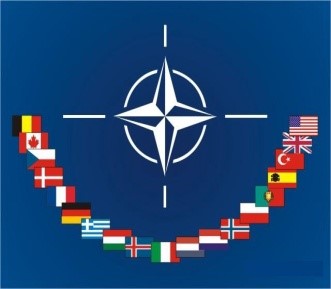
What is the Purpose of NATO?
NATO's purpose is to implement the North Atlantic Treaty that was signed on April 4, 1949. NATO constitutes a system of collective security. Under the system, an attack on one member state is considered as an attack on all and it calls for a collective response. This ensures collective security of all NATO member states. NATO's headquarters are located in Brussels, Belgium.
NATO Member Countries: NATO member countries include 2 North American countries, 27 European countries and 1 Eurasian country.
PRAVAHINI Current Affairs Notes By Success Mantra Coaching Institute GTB Nagar Delhi CLICK HERE
TEST YOURSELF
Q.1 Recently, Russia recognized two independent republics out of Ukraine. Which of the following are these two?
- Kyiv and Luhansk
- Donetsk and Luhansk: ANSWER
- Odessa and Donetsk
- None of the above
Q.2 Consider the given statements & state which of the following is/are incorrect in the reference to the North Atlantic Treaty Organization (NATO)?
- NATO is a military alliance that was formed in 1949 by 12 countries, including the US, Canada, the UK and France
- North Atlantic Treaty Organization (NATO) was formed largely to counter the threat from China post World War II.
- NATO's headquarters are located in Brussels, Belgium.
- I & III is incorrect
- Only II is incorrect: ANSWER
- II & III is incorrect
- None of the above
Q.3 Which of the following given statements is/are incorrect in the reference to the Tension rising between Ukraine & Russia?
- The Moscow Summit in the Normandy format was held in December 2019, the first meeting in three years & During the summit, the leaders of Ukraine, Russia, United States of America and France & United Kingdom stressed complete cease-fire and loyalty to the Minsk Agreement: ANSWER
- The summit did not diminish the clashes, but Russia, Ukraine and the OSCE later made a comprehensive cease-fire decision starting from July 27, 2020, which was maintained until 2021.
- Ukraine pointed to the increasing number of Russian troops in the north and east sides of Ukraine’s border and Crimea.
- None of the following
Q.4 To which of the following international organisations does the Ukraine urges to speed up its membership?
- Organization for Security and Co-operation in Europe (OSCE)
- South Asian Association for Regional Cooperation (SAARC)
- Quadrilateral Security Dialogue (QUAD)
- North Atlantic Treaty Organization (NATO): ANSWER
Q.5 Consider the given statements & state which of the following is/are incorrect in the reference to the India & Ukraine relationship amidst the conflict?
- The Embassy of India in Kyiv was established in May 1992 and Ukraine opened its Mission in New Delhi in February 1993.
- Immediately after the breakup of the Soviet Union, the Government of India recognized the Republic of Ukraine as a sovereign independent country in December 1981.
- India is Ukraine’s 2nd largest export destination in the Asia-Pacific after China and the Sixth largest overall export destination. Pharmaceuticals account for the majority of Indian exports to Ukraine.
- I & III follows
- Only III follows
- Only II & III follows: ANSWER
- All of the above












0 Comment